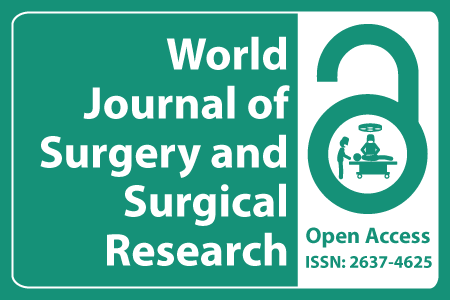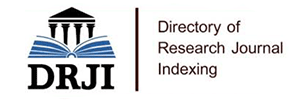
Journal Basic Info
- Impact Factor: 1.989**
- H-Index: 6
- ISSN: 2637-4625
- DOI: 10.25107/2637-4625
Major Scope
- Cardiac Surgery
- Obstetrics & Gynecology
- Gynecological Surgery
- Aesthetic & Cosmetic Surgery
- Dental Surgery
- Neurological Surgery
- General Surgery
- Reconstructive Surgery
Abstract
Citation: World J Surg Surg Res. 2021;4(4):1333.DOI: 10.25107/2637-4625.1333
Comparison between Operative and Nonoperative Treatment of Humeral Diaphysis Fracture: Systematic Review and Meta-Analysis
Kaisa Lehtimäki1 *, Elina Ekman1 , Aleksi Lager1 and Mikhail Saltychev2
1 Department of Orthopedics and Traumatology, Turku University Hospital and University of Turku, Finland 2 Department of Physical and Rehabilitation Medicine, Turku University Hospital and University of Turku, Finland
*Correspondance to: Kaisa Lehtimäki
PDF Full Text Research Article | Open Access
Abstract:
Introduction: Humeral diaphysis fractures have traditionally been treated non-operatively using casts or functional bracing. Although non-operative treatment has demonstrated successful outcomes, operative treatment continues to increase. However, there is a lack of high-quality evidence to show that the operative treatment is superior to non-operative treatment. The aim of the study is to evaluate evidence on the effectiveness of operative vs. non-operative interventions for non-malignant closed fractures of the humeral shaft in adults. Material and Methods: Qualitative and quantitative analysis of randomized controlled trials systematically gathered from Pubmed (Medline), EMBASE, CINAHL, Cochrane Central and Scopus – databases in May 2020. The methodological quality of articles was assessed according to the Cochrane Collaboration’s domain-based framework. Random effects meta-analysis was employed. Results: Of 354 records, 176 were screened based on their titles and abstracts and four based on their full texts. Three RCTs were included in this meta-analysis. The average age of the patients varied from 37 to 50 years and the duration of follow-up was one year. The risk of systematic bias was low for two RCTs and high for one. The pooled between-groups difference was measured using the Disabilities of the Arm, Shoulder and Hand (DASH) score, the Constant-Murray score, and the pain severity level. The proportion of nonunion, differences were 1.9 (95% CI 0.1 to 3.6), 1.8 (95% CI - 1.6 to 5.1, 0.3 (95% CI - 0.2 to 0.8) and 0.1 (95% CI 0.0 to 0.4), respectively. The heterogeneity was low and all the I2 were 0%. Conclusion: No evidence was found to support any clinically significant superiority of operative over non-operative treatment in closed extra-articular humeral shaft fractures. In these situations, non-operative treatment should remain the treatment of choice being less prone to adverse effects than surgery.
Keywords:
Humeral fractures; Shoulder fractures; Arm/surgery
Cite the Article:
Lehtimäki K, Ekman E, Lager A, Saltychev M. Comparison between Operative and Nonoperative Treatment of Humeral Diaphysis Fracture: Systematic Review and Meta-Analysis. World J Surg Surgical Res. 2021; 4: 1333.













